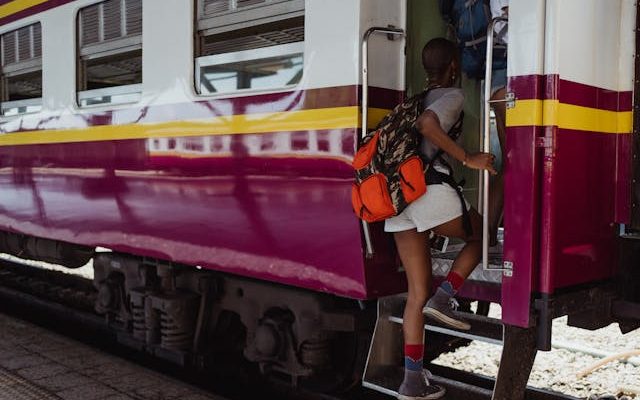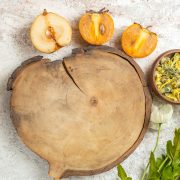Northern Pakistan is a vibrant mosaic of cultural treasures, rugged landscapes, and heartwarming hospitality. While the region’s snow-draped peaks and emerald valleys attract adventurers, it is the culture—bold, intricate, and deeply rooted—that leaves a lasting impression. From the kaleidoscopic truck art decorating Pakistan’s highways to tribal folklore whispered in mountain homes over steaming cups of chai, a journey here offers more than just picturesque vistas. It’s a full-body immersion into traditions shaped over centuries.
Tea, Truck Art & Tribal Tales: Cultural Immersion in Northern Pakistan
If you’re planning a cultural journey to this breathtaking region, booking a flight to Pakistan is your first step toward a soul-stirring experience that transcends tourism and touches the essence of identity and community.
The Melody of Chai: Pakistan’s Tea Ritual
Tea is not just a drink in Pakistan—it is a social glue, a ritual of warmth and welcome that spans every region, class, and ethnicity. Whether it’s the green tea sipped in Gilgit or the buttery, salty pink chai of Kashmir known as noon chai, tea plays a vital role in Pakistani hospitality.
In the north, tea is served with poetic grace. It’s common for a local to offer you a steaming cup as soon as you arrive in a village, no matter how remote. Sitting cross-legged on a floor cushion, with panoramic views of snow-capped mountains beyond wooden balconies, you’ll learn how conversation flows more naturally over a shared brew. For the people of Hunza, Swat, and Chitral, tea is a time-honoured tradition and an emblem of connection.
This simple beverage is also a conversation starter—one that opens the door to deeper discussions about life, customs, and the stories passed down through generations.
A Canvas on Wheels: The Splendour of Pakistani Truck Art
One of the most mesmerising facets of Pakistan’s visual culture is its truck art. These elaborately decorated trucks—roaming the Karakoram Highway and narrow mountain paths—are moving masterpieces. Every available surface is transformed into a gallery of bold florals, political portraits, poetic verses, Islamic calligraphy, and fantastical creatures.
Originating as a way for drivers to personalise their vehicles, truck art has evolved into a vibrant national art form. In the northern territories, trucks become even more eye-catching, flaunting themes inspired by the majestic landscape and tribal heritage. Mirror work, tassels, and handmade wood carvings are added, turning each truck into a mobile shrine of pride and personality.
If you get a chance to speak with a truck painter or driver, they’ll likely tell you the story behind each visual choice—often honouring saints, family, or folklore. This unique artistic expression bridges urban and rural identities, blending old traditions with modern flair.
Tribal Echoes: The Tales of the North
Northern Pakistan is home to a rich tapestry of ethnic groups including the Kalash, Pashtun, Wakhi, and Shina peoples. Each tribe brings with it centuries-old customs, languages, music, and oral storytelling traditions that offer insight into a way of life often overlooked by the outside world.
The Kalash people, living in the remote valleys of Bumburet, Rumbur, and Birir, are particularly fascinating. Known for their colourful festivals, animist beliefs, and beaded clothing, the Kalash community has preserved its pre-Islamic identity for over 2,000 years. Their tales of gods, seasonal myths, and ancestral legends are shared through dance, chants, and festivals like Chilam Joshi and Uchau.
Further east, in the Hunza Valley, you’ll encounter tales of immortality and ancient silk road travellers. The Hunzakuts speak Burushaski, a language isolate unrelated to any other, and celebrate their longevity and self-sustaining lifestyle with pride. Tribal stories here often intertwine with natural elements—rivers as protectors, peaks as sentinels, and landslides as omens.
These stories not only preserve history but also build identity, values, and resilience in a world rapidly shifting around them.
Dress, Dance & Drums: Cultural Festivals of the North
Plan your flight to Pakistan around one of the north’s many festivals for an even richer cultural experience. Whether you find yourself at the Shandur Polo Festival—a wild, high-altitude match played between Chitral and Gilgit teams—or participating in the Kalash seasonal festivals, you’ll witness the joyful spirit of the region firsthand.
Traditional music and dance play a pivotal role in these gatherings. The rhythmic beat of the dhol (drum) is often accompanied by flute melodies and circular dances that symbolise unity and gratitude. Women in Chitral wear embroidered caps and silk shawls, while men from Gilgit sport woollen pakol caps and vests.
Local handicrafts and food stalls set up during these festivals also offer an authentic taste of tribal life. From woolen shawls and gemstone jewellery to dried apricots and salty yak cheese, each item tells its own story of place and process.
Homestays & Human Connection
While guesthouses and eco-lodges exist in towns like Skardu and Gilgit, true cultural immersion lies in opting for a village homestay. These experiences are often coordinated by community-based tourism initiatives, allowing you to live with a local family, share their meals, and contribute directly to the local economy.
Expect to sleep under hand-woven quilts, bathe in glacier-fed water, and help knead dough for fresh roti over a wood-fired stove. Your host may even teach you a few words in their native tongue or take you to their fields to help with planting and harvesting.
These connections—humble, human, and deeply enriching—reveal the heart of northern Pakistan’s cultural charm.
The Journey Itself: Travelling with Purpose
Travelling to northern Pakistan is not a passive holiday. It demands engagement, curiosity, and respect. While the infrastructure is developing, and mountain roads can be challenging, every bump in the journey is rewarded tenfold with experiences that are raw and real.
The region’s complex history, shaped by colonial influences, the partition, and natural isolation, has made it a cultural time capsule. By listening to its stories, admiring its artistic forms, and sharing tea with its people, visitors can honour the land’s depth beyond the guidebook.
So when you next search for a flight to Pakistan, know that it’s not just a gateway to peaks and valleys. It’s an invitation to step into a world of colour, culture, and character—where a truck can tell a thousand stories, a cup of tea can open hearts, and a tribal tale can stay with you forever.
Final Thought
Northern Pakistan offers one of the most authentic cultural immersions available to any traveller today. Beyond its dramatic landscapes and famed hospitality lies a heritage rich in colour, story, and soul. Whether you’re navigating the poetic lanes of Hunza, marvelling at truck art in Gilgit, or dancing with the Kalash under a starlit sky, your journey will be defined by the deep humanity and heritage that pulses through this remarkable part of the world.
















Comments